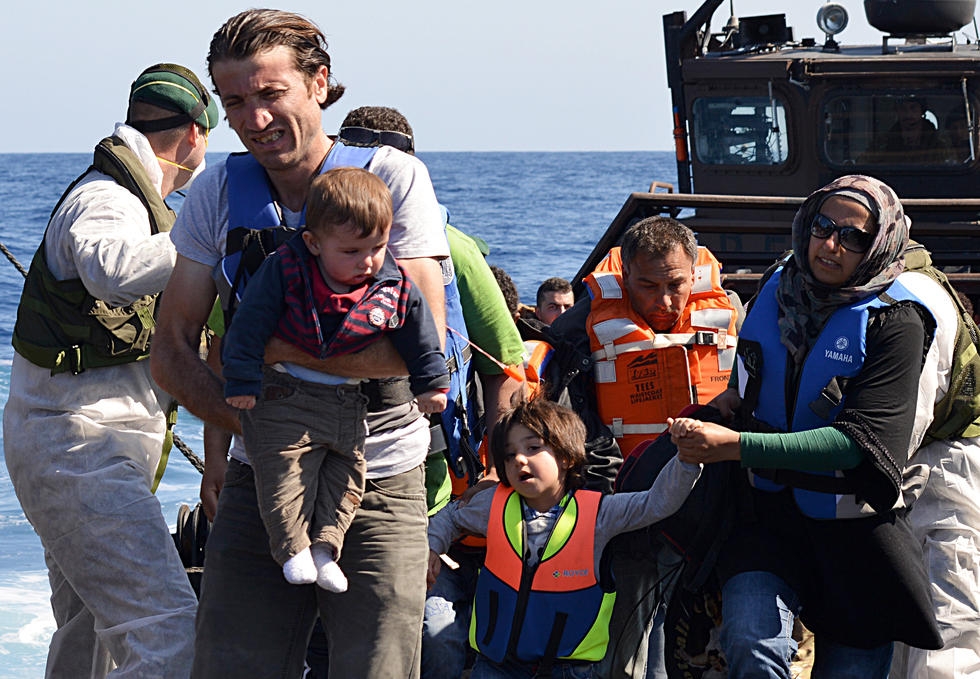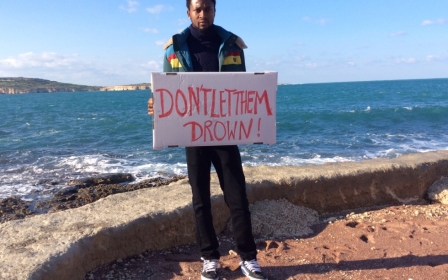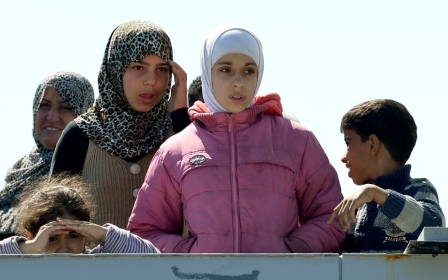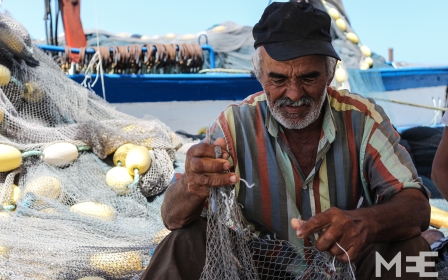The danger of conflating migrant smuggling with human trafficking

The European Union (EU) has responded to the Mediterranean migrant crisis by criminalising migration and proposing a military solution to stop people dying at sea. Europe has legitimised this fateful policy by equating human smugglers with traffickers in people, a deliberate tactic on behalf of policy makers to govern migration as though it were a criminal act.
There has been much opposition to the EU’s proposed policy of attacking refugee boats with military force, nearly 550 slavery and migration specialists recently signed an open letter condemning the plan, but criticism of the European response to the crisis must also focus on the justification of the approach at a policy level.
At its heart, the EU has justified its militarised action plan by conflating “migrant smuggling” with “human trafficking” - the two terms have been used interchangeably by senior policy makers on a regular basis in recent months.
A statement from the Special Meeting of the European Council on 23 April refers to “fighting the traffickers to prevent illegal migration flows”. Italian Prime Minister Matteo Rinzi has compared human traffickers to slave traders, which is a laughable comparison as there is nothing similar between the two beyond the involvement of a sea and a boat in both instances.
One month later, however, the European Commission changed its wording, and a statement adopted on 13 May mentioned “the fight against migrant smuggling as a priority”. The term “smuggling” also appears in a European Commission factsheet on migration published on 27 May.
The fact that trafficking and smuggling have been used to describe the same crisis is likely a conscious choice made by those who hold sway in the European corridors of power.
It is hard to believe that senior officials in Brussels, many of whom are lawyers, do not understand that smuggling and trafficking are not equivalent in law. Smuggling is a consensual phenomenon while trafficking involves coercion and a relationship between a trafficker and a migrant being extended beyond a border crossing.
Differences between the terms have become narrowed in recent times, however, as smuggling has seen the occurrence of many violent acts against migrants including rape, murder, kidnapping and blackmail in the name of profit. However, there remains a clear distinction between smuggling and trafficking.
The reason behind the EU conflating smuggling with trafficking may be an attempt to strip migrants of agency; in the dominant discourse on migration, those on the move are constructed as either criminals or victims.
In this narrative, it is the smuggler who takes on the role of a bad guy, rendering the migrant a helpless victim incapable of making their own decisions who has been somehow duped into embarking on a dangerous journey. What is forgotten is that people who cross borders irregularly are prepared to take any risk necessary to save, or to better their lives, and the lives of their families.
Europe is therefore criminalising the very act of fleeing serious political and economical crises. Migration is depicted as a crime in order to manage it as a law and order issue, whereby control and policing - and in this case, even military action - replace assistance and provision of access to a fair asylum process.
The truth of the matter is that the EU doesn’t even have a comprehensive understanding of smuggling networks. African migrants and refugees that I have spoken to in Malta pointed out that the Libyan smugglers who facilitated their crossing work very closely with corrupt associates, who often occupy high ranking official positions, to whom they are related through family, tribal and clan connections.
I heard stories of human rights violations en route to Libya but, according to my sources, people who are managing the actual act of boarding a boat in Libya – the boats that will be destroyed as part of the EU Nafor Med plan - are smugglers, and not traffickers. These people are simply filling in the vacuum created by rigid visa requirements, carriers’ liability agreements and other measures aimed at stopping people from moving to a more stable and safer European continent.
Disrupting the smuggling networks will only contribute to increasing the dangers involved in crossing the Mediterranean, just like in the case of the militarization of drug war: fees charged by smugglers are likely to rise, putting vulnerable migrants at an even greater risk of abuse.
With higher fees involved, a smuggler is then more likely to become a trafficker, as people who cannot afford the journey may be forced to repay the debt after reaching Europe and end up engaging in bonded labour. Migrants may also be kidnapped and held hostage by traffickers demanding large ransoms from their families, similar to the situation in the Egyptian Sinai Peninsula where Eritreans are held captive by Bedouin tribes.
Given the political instability in Libya, those scenarios may potentially be even worse, with different militia groups and the so-called Islamic State group all taking advantage of desperate migrants trying to reach Europe from their shores.
Smugglers are, of course, not benevolent businessmen playing the role of Robin Hood – stealing from the rich to give to the poor – but the reality is that smuggling networks have been created as a consequence of European migration policies. In fact, smugglers help people escape war, political persecution and dire poverty in the absence of safe and legal channels to Europe.
If Europe truly wishes to save those on the move, rather than pretend to be the noble saviour stopping the evil “slave traders,” then it has to provide alternatives to those deadly routes. Using emotive and inaccurate comparisons to slavery will do nothing to end this crisis – the evocation of slave traders by the EU is also somewhat ironic given Europe’s colonial history.
The language of slavery ignores the role of immigration controls in the migrant crisis. It seems that the main preposition behind the European Agenda on Migration is to make sure that fewer people reach Europe. The aim is not to protect de facto refugees (as opposed to “de jure refugees”, i.e. those legally recognised as refugees) but to “protect” a host society from refugees.
The military plan is politically more attractive than resettlement and relocation programmes because Europe is simply reluctant to even assess asylum claims of those who survive the crossing. This approach is reminiscent of a comment made by then British Home Secretary Jack Straw, who in a speech from 2001 complained: “Thousands of would-be migrants are taking advantage of one aspect of the [Geneva] Convention - namely that it places an obligation on states to consider any application for asylum made on their territory, however ill-founded’.
The problem with this is that you won’t know if an asylum application is “ill-founded” until you have actually seen it. And for this to happen, asylum seekers have to reach Europe alive, and, as it stands, rely on smuggling networks.
- Dr Natalia Paszkiewicz is a Projects Coordinator at the IARS International Institute. Her academic background is in anthropology, refugee studies and social policy. She has been working in the field of migration for over ten years, both in the UK and in Malta.
The views expressed in this article belong to the author and do not necessarily reflect the editorial policy of Middle East Eye.
Photo: Migrants are helped to safety from British Royal Navy ship HMS Bulwark during a rescue mission in the Mediterranean Sea, 28 May (AFP)
Middle East Eye propose une couverture et une analyse indépendantes et incomparables du Moyen-Orient, de l’Afrique du Nord et d’autres régions du monde. Pour en savoir plus sur la reprise de ce contenu et les frais qui s’appliquent, veuillez remplir ce formulaire [en anglais]. Pour en savoir plus sur MEE, cliquez ici [en anglais].





